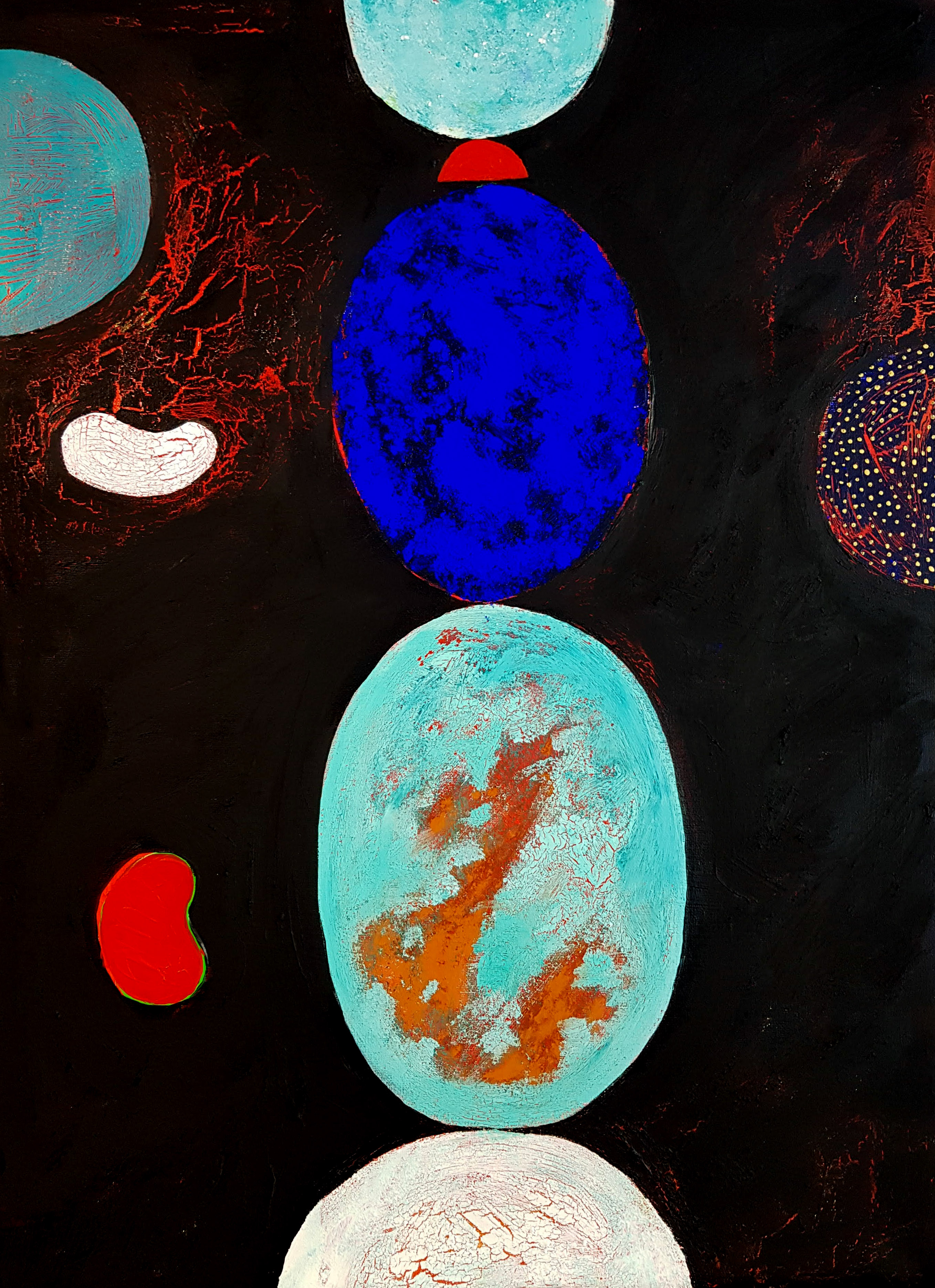
Color perception occurs when radiation of a certain wavelength from the surface of an object is reflected on the membranes of our eyes. Some of the radiation is absorbed by the surface of the object. What if nothing is reflected, but the object absorbs all possible radiation. This kind of color is extremely matte black. Attempts have been made to develop the blackest-black color for a long time, and finally the development of nanotechnology has made it possible. In 2014, the first version of Vantablack material was developed. (Vanta is made up of the letters vertically aligned carbon nanotube arrays.) These are nanotubes made of carbon, which are a dense group on the surface of aluminum. The surface is technological velvet. The latest version developed in 2016 absorbs even more light than the first, which also managed to absorb 99.965% of the radiation. Black is completely devoid of three dimensions because there is no variation created by light and shadow. It is empty depth. If a vantablack garment were developed, it would look like a hole. The head and limbs would swing around the empty opening. Scary.
The development of Vantablack has, of course, been of interest to the war industry. It absorbs ultraviolet, infrared and other visually distinct radiation. However, as a dye, it is carcinogenic. Nevertheless, in the field of art, matter has attracted interest and caused even small-scale fuss. Anish Kapoor was given the exclusive right to use color in his art. I will wait for his works, in which color would form a total emptiness, a space with no perceptible dimensions. The experience is guaranteed to be confusing (and potentially toxic).
The artists got annoyed of such exclusivity and a little later developed the acrylic paint Black 2.0, and latest superior black matte acrylic paint (Black 3.0 of course) was launched in January 2019 as a crowdfunding campaign. It was soon sold out. I would have loved to have tried that. The ivory pigment does not quite deliver the same.
Malevitš, with his black square, once sought a similar emptiness. Emptiness as a black square is the zero point, the point of self-loss. Initially, there have been at least four squares, one of which I once saw at the Center Pompidou exhibition in Paris. It was just a cracking blackish square paintwork, a slight disappointment, not even very black. Far from the experience of depth that Vantablack causes.
Coal is now a hot topic in so many ways. Has there ever been talk of coal so profusely, and for a reason. The forests of the Amazon are transformed into carbon, charred former carbon sinks are left in the fire. Soon students will draw black lines on white paper, black and white lines and surfaces on charcoal, that ancient medium.
Väriaistimus syntyy, kun esineen pinnasta tietyn aallonpituuden omaava säteily heijastuu silmiemme kalvoille. Osa säteilystä imeytyy kohteen pintaan. Mitä, jos mitään ei heijastukaan, vaan esine imee kaiken mahdollisen säteilyn. Tällainen väri on äärimmäinen matta musta. Mustista mustinta väriä on yritetty kehittää kauan ja viimein nanoteknologian kehitys on sellaisen mahdollistanut. 2014 kehitettiin ensimmäinen versio Vantablack-materiaalista. (Vanta muodostuu kirjaimista vertically aligned carbon nanotube arrays.) Kyseessä on siis nanoputkia hiilestä, jotka ovat tiiviinä ryhmänä alumiinin pinnassa. Pinta on teknologista samettia. Viimeisin 2016 kehitetty versio imee jopa enemmän valoa kuin ensimmäinen, joka sekin onnistui absorboimaan 99,965 % säteilystä. Mustin musta on täysin ilman kolmiulotteisuutta, koska mitään valon ja varjon luomaa vaihtelua ei ole. Se on tyhjä syvyys. Jos vantamusta vaate kehitettäisiin, se näyttäisi aukolta. Pää ja raajat heiluisivat tyhjän aukon ympärillä. Pelottavaa.
Vantamustan kehittäminen on kiinnostanut tietenkin sotateollisuutta. Se imee itseensä niin ultravioletit, infrapunaiset kuin muunkin visuaalisesti erottuvan säteilyn. Väriaineena se on kuitenkin karsinogeenistä. Siitä huolimatta taiteen kentällä aine on kiinnostanut ja aiheuttanut jopa pienimuotoista kärhämää. Anish Kapoor sai yksinoikeuden käyttää väriä taiteessaan. Jään odottamaan hänen teoksiaan, joissa väri muodostaisi totaalisen tyhjyyden, tilan, jossa ei ole mitään havaittavia ulottuvuuksia. Elämys on taatusti hämmentävä (ja mahdollisesti myrkyllinen).
Taiteilijat suivaantuivat moisesta yksinoikeudesta ja hieman myöhemmin kehitettiin akryyliväri Black 2.0, jonka viimeisin ylivertaisen musta matta akryyliväri (tietenkin Black 3.0) lanseerattiin 2019 tammikuussa joukkorahoituskampanjana. Se myytiin pian loppuun. Olisin kovasti mielelläni tuota kokeillut. Norsunluumusta pigmentti ei aivan yllä samaan.
Samankaltaiseen tyhjyyteen pyrki aikoinaan myös Malevits mustalla neliöllään. Tyhjyys mustana neliönä on nollapiste, itsensä kadottamisen kohta. Alun perin neliöitä on ollut ainakin neljä, joista yhden näin aikoinaan Centre Pompidoun näyttelyssä Pariisissa. Se oli vain halkeileva mustahko neliön muotoinen maalipinta, hienoinen pettymys, ei edes kovin musta. Kaukana tuosta syvyyden kokemuksesta, jonka Vantamusta aiheuttaa.
Hiili on nyt ajankohtainen niin monelle tapaa. Onko koskaan puhuttu hiilestä näin vuolaasti, ja syystä. Amazonin metsät muuttuvat hiileksi, nuotiotuleen jää hiiltyneitä entisiä hiilinieluja. Kohta opiskelijat piirtävät hiilellä, tuolla ikiaikaisella välineellä mustia viivoja valkoiselle paperille, sysimustia viivoja ja pintoja.

Ps. seuraavilla Frankfurtin automessuilla syyskuussa esitellään viimein valtablack BMW.
Please, Pirjo, would you please, please, please, also write your extraordinary thoughts about all these Colours etc… also in ENGLISH!!! otherwise I can not spread these pearls of wisdom in ”my wonderful world of friends and colleagues and students all over the world”…..PLEASE!! tx, tuula
TykkääTykkää
Thank you Tuula for your inspiring comment. I will work on this in the future.
TykkääTykkää